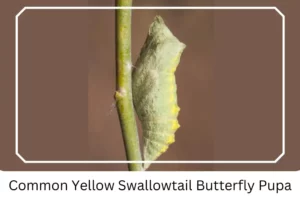Common Yellow Swallowtail (Papilio machaon)
The Common Yellow Swallowtail, a species of butterfly celebrated for its impressive size and distinctive ornamental patterns, stands as a marvel of nature’s artistry. Recognizable at a glance, this butterfly graces many regions across the globe, boasting 37 recognized subspecies. Its presence is a testament to the incredible diversity and adaptability of butterflies, making it a subject of fascination for both scientists and enthusiasts alike.
Scientific Classification
- Family: Papilionidae
- Genus: Papilio
- Common names: Old World Swallowtail
- Scientific Name: Papilio machaon
Overview
The lifecycle of the Common Yellow Swallowtail encapsulates a journey of transformation and beauty, from the emergence of its caterpillars to the majestic flight of the adults. This species thrives in a variety of habitats, showcasing its adaptability and the critical role it plays in our ecosystems. With its unique feeding habits and preferential flower choices, the Common Yellow Swallowtail not only contributes to the pollination process but also adds to the biodiversity of its environment.
Description and Identification
 Caterpillar
Caterpillar
The journey of the Common Yellow Swallowtail begins when caterpillars emerge from eggs after approximately a week. Initially black with white bands, they undergo a dramatic transformation by July, ready to pupate into a bright green adorned with thin black bands and orange spots, showcasing nature’s palette.
 Pupa
Pupa
The chrysalis phase sees the caterpillar encased in either a pale brown or light green shell, featuring a darker brown stripe. It remains attached to a reed’s stem, entering a hibernation that lasts through winter until spring’s warmth signals the next phase of its life.
Adult Butterfly
Sexual Dimorphism: Absent in this species, both males and females share similar markings, although females are notably larger.
Color and Appearance: In flight, their wings present a dark gray base with distinctive off-white to cream marks and parallel white spots along the edges. The hindwings boast a bright reddish-orange eyespot near the ‘tail’, surrounded by a black border, with cyan to light blue spray marks adding to their beauty.

 Average Wingspan: Ranges between 9 to 10 cm, a testament to their large size.
Average Wingspan: Ranges between 9 to 10 cm, a testament to their large size.
Flight Pattern: Characterized by strong, deliberate flaps, indicative of their robust nature.
Quick Facts | |
| Distribution | This butterfly’s range extends through Europe and Asia and reaches into parts of North America, including Canada, Alaska, and California. |
| Habitat | Prefers damp wildflower meadows, fens, tundras, forests, and several other temperate locales. |
| Host Plants | Favors Sagebrush species, with a particular taste for Arctic wormwood and wild tarragon. |
| Adult Diet | Exclusively flower nectar, with a preference for pink or mauve blossoms. |
How to Identify Common Yellow Swallowtail?
Identifying the Common Yellow Swallowtail is an engaging process, thanks to its distinct features and colors. Look for large, dark gray-based wings adorned with unique off-white to cream markings, and the unmistakable reddish-orange eyespots near the wingtips. The caterpillars are equally distinctive, starting black with white bands and transforming into bright green with ornamental patterns. Whether perched with wings spread or fluttering with powerful flaps, this butterfly’s size, and striking coloration make it unmistakable in its various habitats.
Did You Know?
- The Old World Swallowtail continues to beat its wings even while feeding on nectar, a rare behavior among butterflies.
- It exhibits a strong preference for pink or mauve flowers, likely due to the color’s attractiveness.
- This butterfly can cover large distances during its flight, contributing to its widespread distribution and genetic diversity.
Conclusion
The Common Yellow Swallowtail is more than just a beautiful sight; it’s a symbol of nature’s interconnectedness and the importance of preserving biodiversity. Through understanding its lifecycle, habits, and habitats, we can appreciate not only its beauty but also the role it plays in our ecosystems. This butterfly’s journey from egg to adult is a reminder of the resilience and adaptability of nature, inspiring us to protect and cherish our natural world.
Common Yellow Swallowtail Pictures

Scientific Classification

- Family: Papilionidae
- Genus: Papilio
- Common names: Old World Swallowtail
- Scientific Name: Papilio machaon








